OKR Reporting: Why it's Important to Keep Track of Your Goals

OKR reporting is the reason behind your favorite tech giant’s success—and today, we’ll show you how you can implement it effectively in your marketing campaigns.
- What is OKR Reporting?
- What are the Benefits of OKR Reporting?
- - Make Better Decisions
- - Track Progress Accurately
- - Improve Transparency
- What are the Limitations of OKR Reporting?
- - Too Many OKRs
- - Focus on Big Picture
- - Company-Wide Misalignment
- How to Track Your OKRs with DashThis
- OKR Reporting Made Simple with DashThis
What is OKR Reporting?
OKR stands for objective and key result. It’s a goal-setting methodology where businesses set and meet their company goals within a time frame.
For example, a marketing agency with an OKR of increasing LinkedIn ads leads by 20% for Q3 might create a dashboard like this to track its progress.
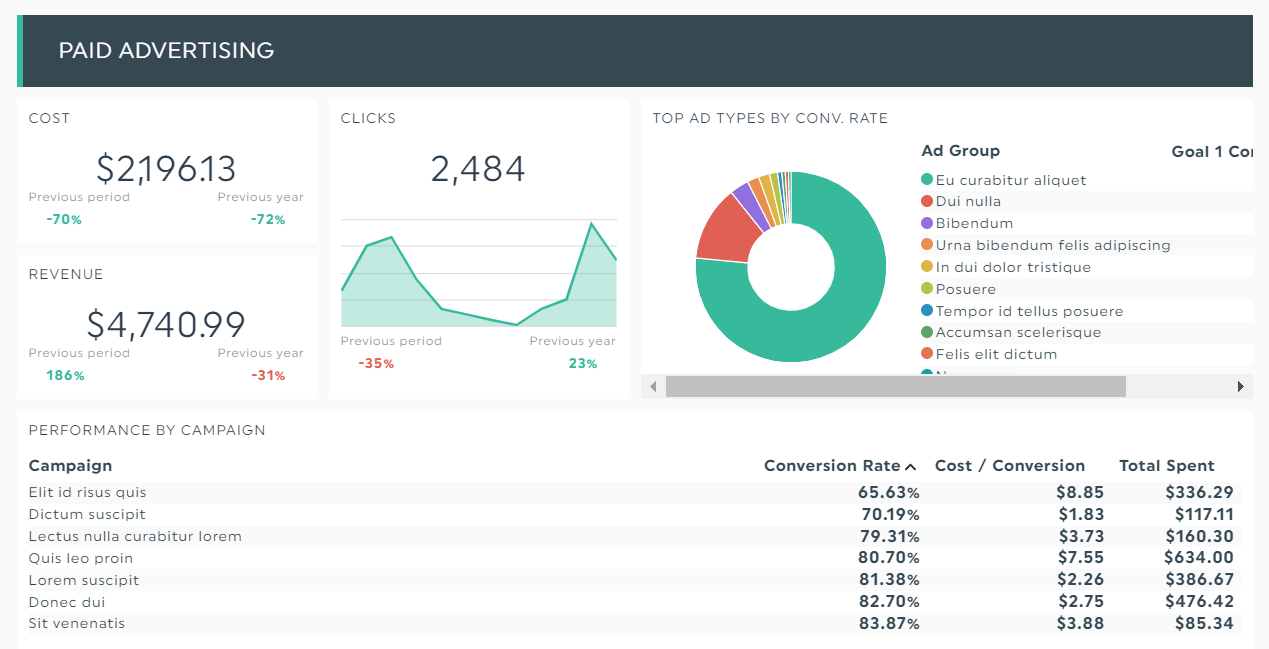
Grab this all-in-one LinkedIn report with your own data!
This goal-setting framework was popularized in John Doerr’s book, Measure What Matters. Doerr, a venture capitalist, credits OKRs behind the massive growth of tech giants like Intel, Google, and the Gates Foundation.
What is OKR and KPI? Here’s a quick way to tell OKRs apart from key performance indicators (KPIs). OKRs are a system for setting and achieving company objectives, whereas KPIs are a set of data points that track performance for projects and initiatives. KPIs are strictly quantitative, but KRs are both quantitative and qualitative.
The OKR framework focuses on your team members’ efforts, explains Katrina Dalao, content marketing manager at Referral Rock.
"Throughout the month or quarter, a lot of small tasks and activities pop up to keep you busy, but many of them may not really contribute to the business. Setting OKRs aligns everyone. It serves as a north star for the team."
What are the Benefits of OKR Reporting?
Make Better Decisions
Data-driven companies make more effective and informed decisions, so much so that they are 23% more likely to acquire customers.
Imagine you run a SaaS startup. While reviewing the data in your product analytics tool, you discover that 30% of users dropped off before reaching activation.
As such, you come up with a new OKR:
Objective: Reduce user onboarding process time for [product] from five days to two in Q4.
Key results #1: Create x1 onboarding email sequence (with KPIs: click rate and conversion rate)
Key results #2: Include 3-5 contextual hints within product to increase visibility (with KPI: feature adoption rate)
Key results #3: Adjust onboarding experience based on 5 user personas (with KPI: time to value)
Note that these OKR examples are simplified, but you get the idea!
Had it not been for the in-app analytics and your decision to implement OKR for reporting in the first place, you wouldn’t have thought of improving the onboarding experience.
Track Progress Accurately
Projects can’t succeed if there’s no timeline and last identified progress in sight.
Good OKRs are the missing puzzle here. They track progress towards goals and provide value to employees and the higher-ups.
Improve Transparency
OKR reporting increases company-wide visibility, eventually promoting transparency, productivity, and employee engagement in the long run.
For example, team OKRs ensure that every stakeholder in the workflow or project management understands how their individual role impacts the overall result. The weekly check-ins allow them to carry out team performance reviews and fine-tune them for the following week if necessary.
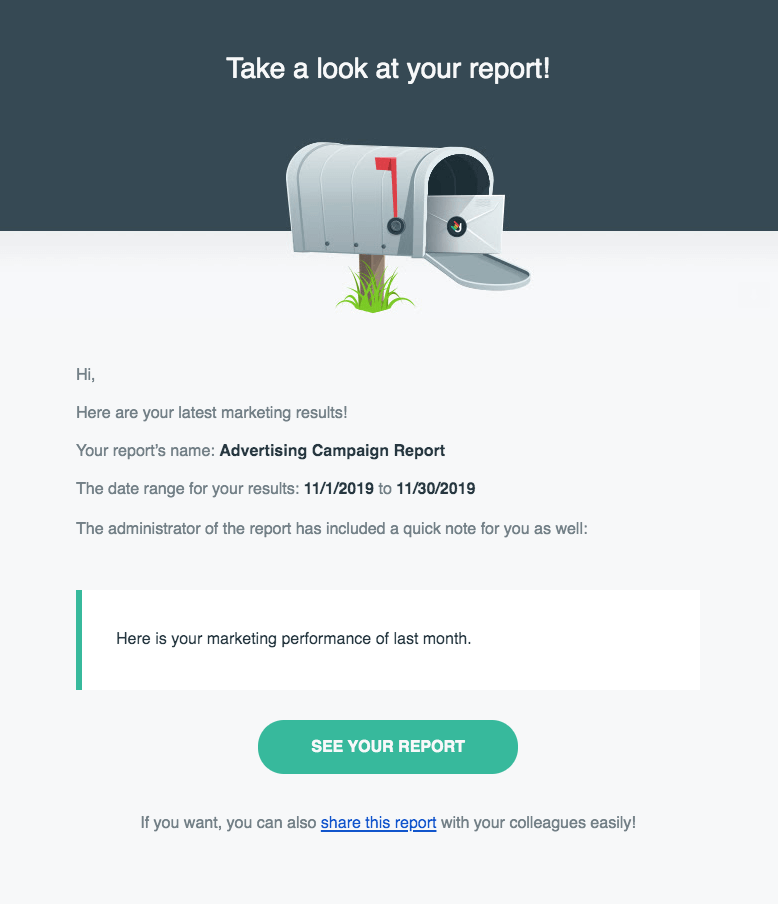
Before each weekly check-in, schedule an automatic email dispatch to all stakeholders to inform them what’s happening in the business
OKRs at the team level are far more effective than individual OKRs as they’re based on the collective experience, where every member works together towards a shared goal.
What are the Limitations of OKR Reporting?
Too Many OKRs
It’s always tricky identifying OKRs that matter. Do it wrong, and you lose focus and waste time on organizing low-value efforts.
Alas, we often fall into the trap of setting too many OKRs for all marketing activities (blame it on the 1984483 tasks on our marketing plate!).
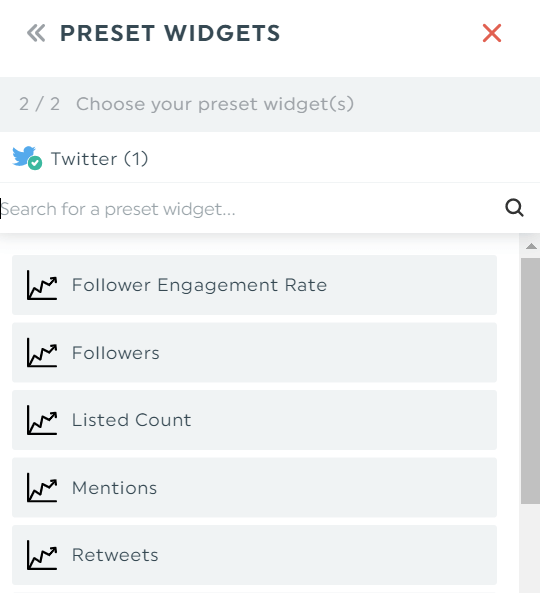
Preset Widgets: DashThis pre-selects metrics and/or KPIs (based on popularity), saving you time and hassle of setting them up from scratch
A good rule of thumb: Pick 3-5 OKRs every quarter that have the biggest impact on the business’s revenue growth.
Focus on Big Picture
Since OKR is a goal-setting framework, its focus is only on the end goal(s). To make the most of your OKR process, track your OKRs with your KPIs.
Company-Wide Misalignment
Alignment leads to greater growth. Just marketing-and-sales alignment alone increases revenue by 208%.
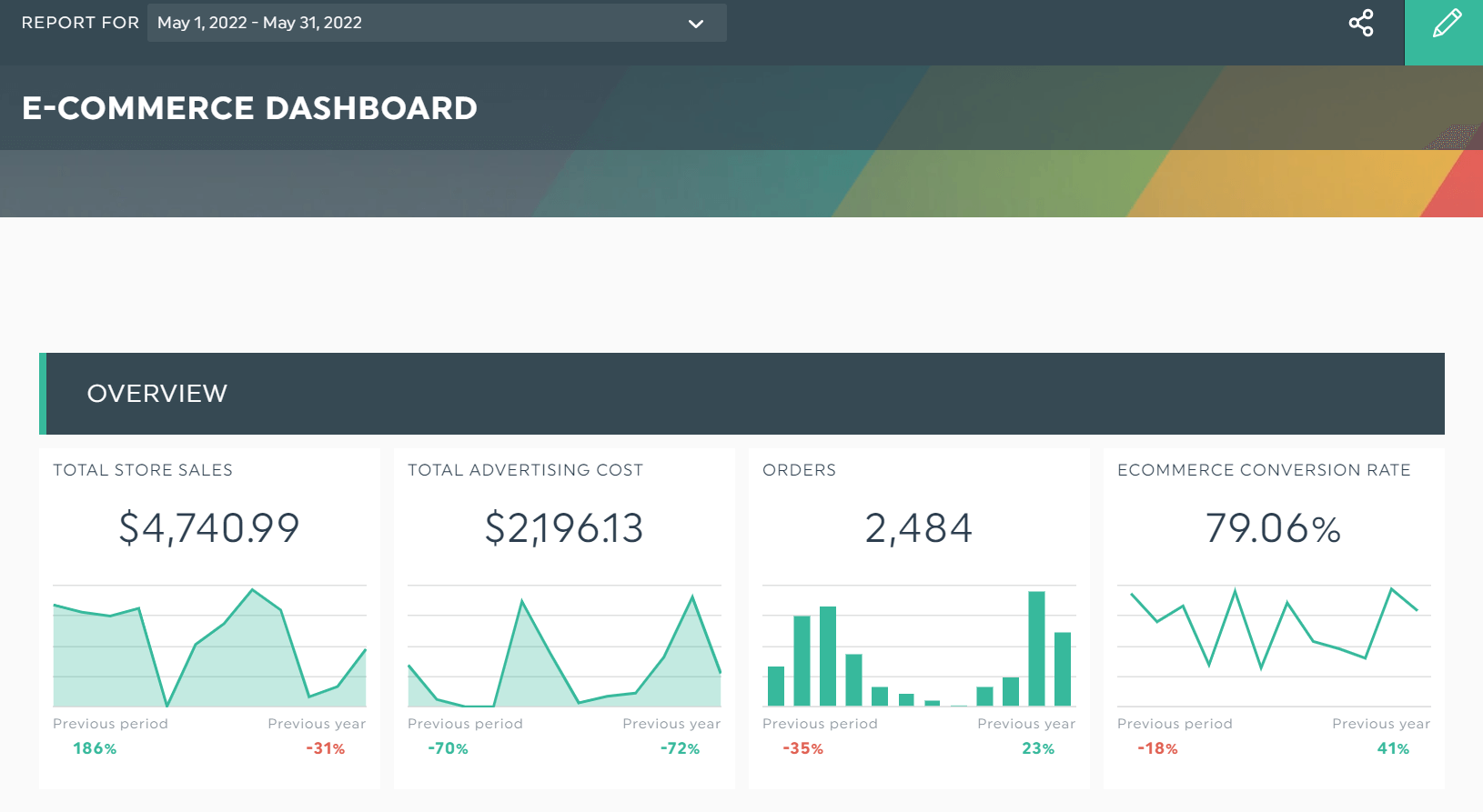
Grab this sales report with your own data to demonstrate the ROI of marketing
However, true alignment remains a challenge.
Only 23% of sales relationships have been influenced by marketing on average. There are various reasons behind the disconnection, such as the lack of trust, different data sets, and failure to work in coordination.
OKR guidelines: Enforce both top-down and bottom-up communication to banish the silo mentality for good.
Leaders from each department should establish company-wide goals clearly before implementing the OKRs together as a team. Next, get all members to sit together and kick around ideas.
Everyone must be on the same page before continuing to the next step.
How to Track Your OKRs with DashThis
Track your OKRs alongside KPIs.
While OKR reporting keeps the big picture top of mind, KPIs keep you on track of your marketing activities that ultimately lead to your long-term goal.
DashThis isn’t an OKR software with built-in OKR templates, but it is an automated reporting tool that you can use in your reporting.
Our tip: Create dashboards with different sections related to the OKRs. These sections should include specific KPIs so that you can determine how close or far along you are in achieving your milestones.
Go ahead and grab your free 15-day trial here. After registering for an account, complete the following steps:
- Pick a report from 30+ free templates
- Connect your favorite marketing tools
- Select your metrics under Preset Widgets
DashThis will grab the data from your desired channels automatically. Once these metrics appear on the right side of the dashboard, drag and drop them accordingly.
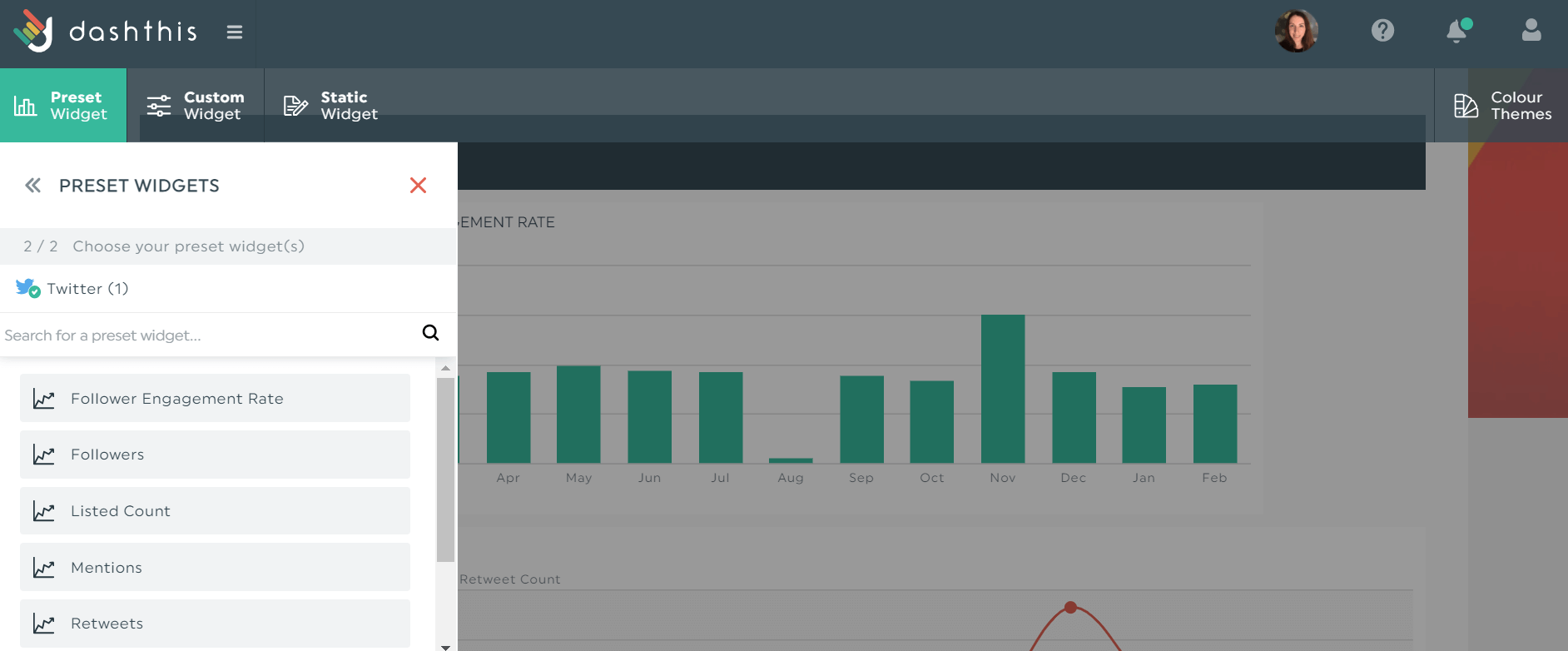
Add notes within the report to provide additional context or comments to share the next steps. Merge multiple metrics in a single widget to show the overall results. And give stakeholders real-time access by sending them a shareable URL link.
Say goodbye to Excel spreadsheets. Sign up for your free 15-day trial today.
OKR Reporting Made Simple with DashThis
OKR explained: It’s the north star not only for the team but also the entire organization.
DashThis is an automated marketing tool that gathers data across multiple channels into one customizable report. Use it to monitor your KPIs automatically and measure your OKR progress.
Grab your free 15-day trial today.
Ready to track your most important OKR's and KPI's?
Read More
Don’t miss out!
Automate your reports!
Bring all your marketing data into one automated report.
Try dashthis for free

